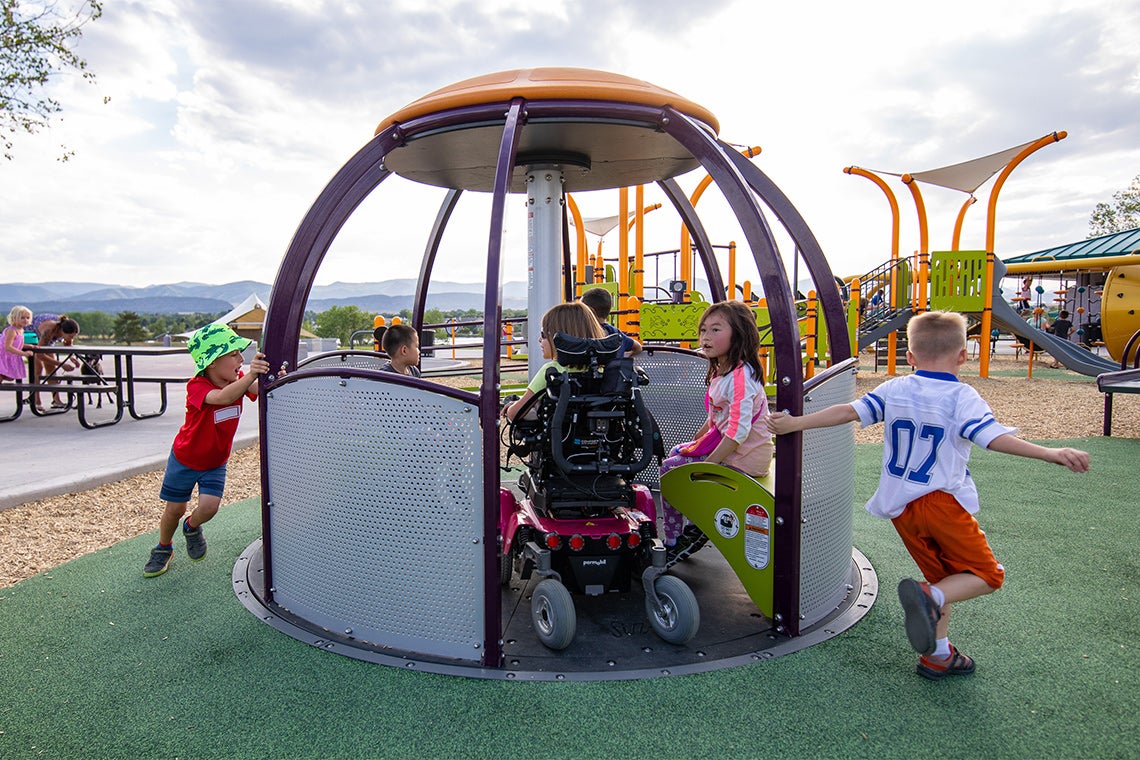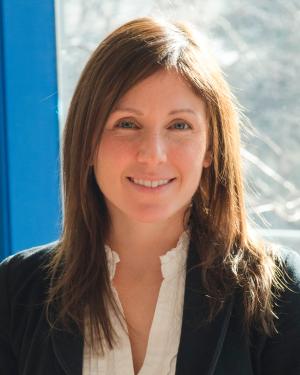
How do Canadian children with disabilities and their families experience playgrounds? What about adjacent areas such as parking lots and pathways? How can educators and rehabilitation specialists use playground spaces?
These are some of the topics explored by Kelly Arbour-Nicitopoulos, an associate professor studying disability and physical activity in the University of Toronto’s Faculty of Kinesiology and Physical Education (KPE).
Since 2018, Arbour-Nicitopoulos and her research team have been working with Canadian Tire Jumpstart Charities (Jumpstart) to evaluate the impact of the playgrounds built through the charity’s Inclusive Play initiative. The initiative works in partnership with local municipalities to bring large-scale inclusive play infrastructure to communities across Canada in an effort to ensure children of all abilities have equal and equitable access to participation in play.
 Kelly Arbour-Nicitopoulos
Kelly Arbour-Nicitopoulos
“Families of children with disabilities have been enjoying available opportunities to be involved in play on the playgrounds, but challenges still remain in the surrounding environment,” says Arbour-Nicitopoulos.
“For example, while municipalities try to ensure the playgrounds include access to parking spaces, pathways and washroom facilities, we are hearing from families that the accessibility and inclusivity of these playground surroundings must be improved upon as they matter just as much as the playground area itself.”
By communicating these findings back to Jumpstart and the communities where the playgrounds are located, Arbour-Nicitopoulos hopes to create a more inclusive playground experience “from the moment a parent or child wants to go to the playground” to when they arrive back home.
Based on their research, Arbour-Nicitopoulos and her team developed 13 recommendations on how to design inclusive playgrounds. She is now working with partners to create evidence-informed resources that will help organizations put the recommendations into practice.
“We have been creating evidence-based resources with colleagues at The Steadward Centre [for Personal & Physical Achievement] at the University of Alberta and at Holland Bloorview [Kids Rehabilitation Hospital] to support not only the building of more inclusive and accessible playgrounds, but also training on inclusive play practices to maximize the return on investment of playground spaces and create quality play experiences for children and youth with disabilities,” she says.
Arbour-Nicitopoulos’s research is related to a larger research initiative, the Canadian Disability Participation Project (CDPP), that’s funded through a Partnership Grant from the Social Sciences and Humanities Research Council of Canada.
Arbour-Nicitopoulos recently teamed up with Tim Ross, a scientist at the Bloorview Research Institute and assistant professor at U of T’s department of geography and planning in the Faculty of Arts & Science, Ingrid Kanics of Kanics Inclusive Design Services, LLC, and Professor Jennifer Leo, director of the Faculty of Kinesiology, Sport, and Recreation’s Steadward Centre at U of A, to create a comprehensive report titled, “Creating Inclusive Playgrounds: A Playbook of Considerations and Strategies.”
The development of the 141-page playbook has received support from Canadian Tire Jumpstart Charities’ Inclusive Play Project and is connected with the larger research that Arbour-Nicitopoulos leads on the Inclusive Play initiative. The playbook offers municipalities, schools, community groups, practitioners (e.g., designers, planners, builders, developers) and families living with disability a comprehensive resource for creating accessible and inclusive playgrounds. It goes beyond the typical boundaries of playground design, addressing topics such as community engagement, play programming, playground surroundings, service and maintenance, and more.
The playbook also helps those who are interested in creating inclusive play spaces within their communities to focus on four key questions:
- How do we start?
- Can I get there?
- Can I play?
- Can I stay?
The resource then guides the reader through important considerations and strategies relating to a wide array of specific issues, including site selection, accessible parking and pathways, signage and wayfinding, playground safety and facilities and amenities that are needed in the surrounding environment.
“All children deserve equitable play opportunities within their communities,” says Arbour-Nicitopoulos. “For too long, society has allowed playgrounds to be exclusionary play spaces to children with disabilities. Playground design should account for the many ways in which children move, learn and play.
“My hope is that the research that our team is doing will impact how playground designers, municipalities, and child and youth recreation programmers create and use playground spaces so they are inclusive spaces for all children to play within.”
With files from Suelan Toye







